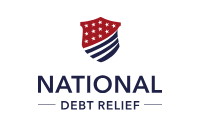Top Food Assistance Government Programs: Your Guide to Accessible Food Support

Access to adequate and nutritious food is essential for maintaining good health and quality of life. Yet, millions of Americans face challenges in securing consistent and affordable food. Fortunately, multiple government food assistance programs provide critical support to families and individuals in need. Understanding these programs, eligibility criteria, and how to apply can ensure food security for yourself and your loved ones.
This guide details the top government-sponsored food assistance programs available today, including who qualifies, benefits offered, and how you can get started.
1. Supplemental Nutrition Assistance Program (SNAP)
One of the largest and most impactful food assistance programs is the Supplemental Nutrition Assistance Program (SNAP). Formerly known as food stamps, SNAP provides monthly benefits to help eligible individuals and families purchase nutritious food from authorized grocery stores and farmers’ markets.
Who qualifies:
- Low-income families and individuals
- Elderly and disabled persons on fixed incomes
- Those experiencing temporary financial hardship due to unemployment
How SNAP works:
Participants receive benefits through an Electronic Benefit Transfer (EBT) card, used like a debit card to buy food. Benefits vary based on household size, income, and other factors. Applications are managed by local state agencies.
2. Special Supplemental Nutrition Program for Women, Infants, and Children (WIC)
WIC specifically targets the nutritional needs of pregnant women, new mothers, infants, and young children up to age five. Participants receive nutritious foods, health education, breastfeeding support, and referrals to healthcare providers.
Benefits include:
- Food packages tailored to nutritional needs
- Health screenings and counseling
- Nutritional education and breastfeeding support
Who qualifies:
- Pregnant, postpartum, and breastfeeding women
- Infants and children up to age five
- Households meeting income guidelines and nutritional risk assessments
Applications are handled through local WIC agencies.
3. National School Lunch Program (NSLP)
The National School Lunch Program provides nutritious, free or reduced-cost lunches to millions of children each school day. It ensures children from lower-income families have access to healthy, balanced meals, significantly enhancing their overall health, academic performance, and wellbeing.
Benefits:
- Free or reduced-price lunches for eligible students
- Nutritious meals designed to meet federal dietary standards
Who qualifies:
- Children from families whose income meets federal poverty guidelines
- Families already receiving SNAP benefits automatically qualify
Applications are typically processed through your child’s school district.
4. School Breakfast Program (SBP)
Similar to NSLP, the School Breakfast Program provides nutritious breakfasts at low or no cost to eligible children, ensuring students start the day with a balanced meal, enhancing learning and overall health outcomes.
Who qualifies:
- Children from households meeting income eligibility criteria
- Automatic eligibility if receiving SNAP or TANF benefits
Enrollment is facilitated through local schools and districts.
5. Child and Adult Care Food Program (CACFP)
CACFP provides reimbursements to child care centers, adult daycare facilities, and afterschool programs that offer nutritious meals and snacks. It promotes healthy eating habits and nutritional education for vulnerable populations, including children, seniors, and adults with disabilities.
Benefits:
- Nutritious meals and snacks at daycare centers and after-school programs
- Nutritional support for elderly adults in adult care settings
Who qualifies:
- Children and adults enrolled in participating care programs
- Providers must meet eligibility standards outlined by state agencies
Care providers can join by contacting their local CACFP agency.
6. The Emergency Food Assistance Program (TEFAP)
TEFAP helps supplement the diets of low-income Americans by providing emergency food supplies at no cost. Food is distributed through local food pantries, soup kitchens, and charitable organizations nationwide.
Who qualifies:
- Individuals and families in emergency or short-term food crises
- Those meeting state-established income guidelines
Participants can access benefits by contacting local food banks or food pantries.
7. Commodity Supplemental Food Program (CSFP)
CSFP offers monthly packages of nutritious food to low-income elderly individuals. This program aims to address nutritional deficiencies common among seniors, promoting healthy diets and combating hunger.
Benefits:
- Monthly food packages including nutritious commodities such as fruits, vegetables, grains, dairy products, and protein-rich foods
Who qualifies:
- Low-income elderly adults aged 60 and above
- Individuals meeting state-defined income limits
Applications are submitted through participating local agencies, typically food banks or senior centers.
Leveraging Additional Resources: Trumpcare Medicare Health Plan
In addition to food assistance, maintaining comprehensive healthcare coverage is crucial, especially for seniors and low-income individuals. For those interested in exploring affordable healthcare options alongside nutritional support, programs like the Trumpcare Medicare Health Plan can be particularly valuable. Trumpcare offers diverse plans tailored to various needs, helping lower healthcare expenses while preserving high-quality medical services.
How to Determine Your Eligibility and Apply for Food Assistance
Understanding your eligibility is the first crucial step toward securing food assistance:
- Check Federal Poverty Guidelines: Eligibility typically depends on income. Check current federal poverty guidelines to assess your qualifications.
- Identify Relevant Programs: Match your needs and circumstances to programs listed above.
- Prepare Documentation: Commonly required documents include proof of income, household size, identification, and residency verification.
- Apply through the Proper Agency: Each program has different application processes. Many require direct interaction with local or state agencies or authorized organizations.
- Follow-up: Stay proactive in checking application status, deadlines, and any required documentation updates.
Final Thoughts: Ensuring Food Security for Your Household
Access to reliable and nutritious food is vital for health and quality of life. The numerous government food assistance programs outlined above are designed specifically to help those facing financial challenges. By exploring programs like SNAP, WIC, and school meal initiatives, and by applying for the support you qualify for, you can ensure consistent food availability for yourself and your family.
In addition, remember the importance of maintaining robust healthcare coverage through specialized programs like the Medicare Health Plan to further enhance your family’s financial stability and overall health security.
Explore Our Categories

Credit Cards

Debt

Loans

Insurance

Retirement

Home Buying

Investing

Taxes
Free Yourself From Debt

National Debt Relief
✅ Reduce Your Debt – Pay Less Than You Owe!
✅ One Simple Monthly Payment – No More Juggling Bills.
✅ Get Relief From Credit Cards, Medical Bills & More
Ranked #1

